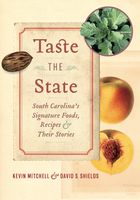🔥 Treat yourself (or your dad)! 25% off ckbk Premium Membership with code FATHERSDAY 🔥
Hoppin’ John
By Kevin Mitchell and David S. Shields
Published 2021
Hoppin’ John is collard greens’ counterpart as a lucky food. When asking how the famous rice and field pea pilau Hoppin’ John got its name, you may get one of the following stories. A man named John would peddle the dish his wife made through the streets with a noticeable limp. Or, a couple celebrating the New Year allowed an unexpected guest to join in on the celebration, calling it a “hop in John.” Lastly, it is said to come from a French dish called “Poi Pigeon” that was introduced to the Lowcountry by slaves from the Caribbean. Poi is pea in French and is the basis of this dish traditionally eaten on New Year’s Eve and said to bring luck and prosperity. In the case of the pea, we look to the black-eyed pea, one of many field peas domesticated some five thousand years ago in West Africa. They crossed the Atlantic with enslaved Africans and were planted in their food gardens. They soon became a field crop in the Carolinas and were exported to the Caribbean before the Revolutionary War.
In this section
Advertisement
Advertisement


